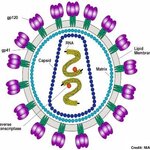Clinical Research

Human and veterinary medicine could receive a big boost through use of larger animals, especially pigs and dogs, in research, with Europe at the forefront, according to a recent workshop organized by the European Science Foundation (ESF), which called for a European pig clinic to facilitate generation and characterization of models of human disease that would be funded within the EU's Seventh Framework program, the main source of EU funding for research projects.
They say this will improve the prospects of bringing drugs to the market more quickly at less cost, as well as accelerating…

Premature infants who need intensive care or surgery are less sensitive to thermal (hot and cold) sensations later in life, according to research conducted at UCL (University College London). The study, published in the journal Pain, suggests that pain and injury related to major medical interventions in early development may alter how children respond to painful stimuli much later in life.
In the study, 43 eleven-year-old children born at less than 26 weeks of gestation (14 weeks premature) who are being followed up by the EPICure study group, were tested for their responses to…

Scientists report that human gene mutations expressed in yeast cells can predict the severity of Batten Disease, a fatal nervous system disorder that begins during childhood. The new study published in Disease Models&Mechanisms (DMM) describes how the extent of changes in mutated cells paralleled the severity of symptoms seen in humans.
The initial, milder symptoms of Batten disease appear in children between ages 4 and 7. Children with this disorder (also known as juvenile neuronal ceroid lipfuscinosis, or JNCL) suffer vision loss and exhibit learning difficulties and behavioral…

ROCKVILLE, Maryland, December 19 /PRNewswire/ --
Neuralstem, Inc. (NYSE Alternext US: CUR) announced this morning that it has filed an Investigational New Drug (IND) application with the U.S. Food and Drug Administration (FDA) to begin a clinical trial to treat amyotrophic lateral sclerosis (ALS or Lou Gehrig's disease). The Company is planning to treat ALS patients through spinal injections of its stem cells via its patented Human Neural Stem Cell technology.
(Logo: http://www.newscom.com/cgi-bin/prnh/20061221/DCTH007LOGO )
Like all first human trials, this proposed trial is primarily…

All the cells in our body have the same set of genes. The reason that we have arms, legs, heads, etc. is because transcription factors turn genes on and off in the right places at the right time. This report out of Colorado Springs shows what happens when genes get turned on in the wrong place. It appears that the poor child in this report was suffering from a teratoma: an inappropriately placed but otherwise normal-looking growth of a body structure in the form of a tumor. Fortunately, the child is alive and hopefully will recover fully.
The placement of a…

65 million years of evolution divergence and being rodents is too much difference, says Stanford immunologist Mark Davis, PhD , so we need to do more research on humans and less on mice.
Apparently, the fabled laboratory mouse — from which we have learned so much about how the immune system works — can teach us only so much about how we humans get sick.
Davis, director of the Stanford Institute for Immunity, Transplantation and Infection, proposes that the current mouse-centered, small-laboratory approach be supplemented by a broad, industrial-scale "systems biology" approach…

Everyone knows mountaineering can be dangerous and climbing Mt. Everest more dangerous than most. Counterintuitively, most deaths occur during the descent, in the so-called 'Death Zone' just above 8,000 meters. But why deaths happen hadn't really been explored until now.
An international research team has conducted the first detailed analysis of deaths during expeditions to the summit of Mt. Everest. They identified factors that appear to be associated with a greater risk of death, particularly symptoms of high-altitude cerebral edema and published their results in the British Medical…

Since the 80’s, as the awareness of HIV has increased exponentially, scientists have struggled for a vaccine to quell the rising number of AIDS-related deaths occurring each year. According to an AIDS epidemic update released in December of 2006 by the Joint United Nations Program on HIV/AIDS (UNIADS) and the World Health Organization (WHO), there were 39.5 million people worldwide living with HIV. That includes the 4.3 million newly infected individuals that year alone, and not including the 2.9 million deaths from AIDS in 2006.
The HIV-1 virion uses the host cell membrane to form the…
Continuing my two-day streak of checking the Daily Telegraph, I found another story that seemed blog-worthy. Now when you hear that old joke about a doctor telling the patient he can play piano or the violin again, you can completely ruin the joke and say, "Actually, science suggests that he can!" Take that, joke tellers of the world.
Dorian Cox, the lead guitar player for the five-piece British indie rock band, The Long Blondes, suffered a stroke in June at the tender age of 27 and is paralyzed on the right side of his body. [Sadly, the band decided to call it quits because, as Cox said on…

Defective calcium metabolism in nerve cells may play a major role in a fatal genetic neurological disorder that resembles Huntington’s disease, researchers at UT Southwestern Medical Center have found in a mouse study.
The disease, called spinocerebellar ataxia 3 – also known as SCA3, or Machado-Joseph disease – is a genetic disorder that, like Huntington’s, impairs coordination, speech, and vision and causes brain atrophy. Although rare, the condition is one of the most common inherited forms of ataxia and most frequently affects people of Portuguese descent.
The UT Southwestern researchers…